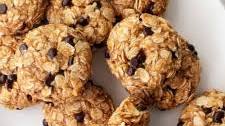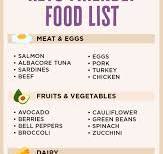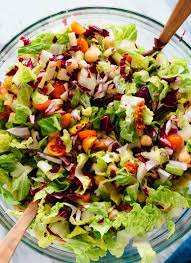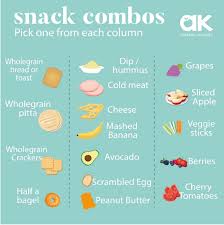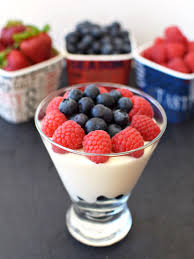Wholesome Morning Delight: A Nutritious Oatmeal Recipe to Start Your Day Right
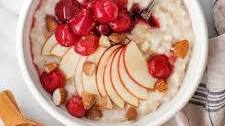
The Perfect Oatmeal Recipe for a Healthy Start
Start your day right with a delicious and nutritious bowl of oatmeal. Not only is oatmeal a comforting breakfast option, but it is also packed with essential nutrients to fuel your day. Here’s a simple yet satisfying oatmeal recipe that you can easily whip up in the morning:
Ingredients:
- 1/2 cup rolled oats
- 1 cup milk (or water for a dairy-free option)
- 1 tablespoon honey or maple syrup
- A pinch of cinnamon
- Fresh fruits (such as berries, bananas, or apples) for topping
- Nuts or seeds for added crunch (optional)
Instructions:
- In a saucepan, combine the rolled oats and milk (or water) over medium heat.
- Stir in the honey or maple syrup and cinnamon.
- Cook the oatmeal mixture, stirring occasionally, until it reaches your desired consistency (usually about 5-7 minutes).
- Once cooked, transfer the oatmeal to a bowl.
- Top your oatmeal with fresh fruits and nuts or seeds for added texture and flavour.
- Enjoy your warm and hearty bowl of oatmeal!
This oatmeal recipe is not only quick and easy to make but also highly customizable. Feel free to experiment with different toppings such as coconut flakes, chia seeds, or nut butter to suit your taste preferences. Incorporating oatmeal into your breakfast routine is a great way to kickstart your day with a healthy and filling meal.
So why not give this nutritious oatmeal recipe a try tomorrow morning? Your body will thank you for it!
Six Tips for Perfecting Your Oatmeal: Creamy, Flavourful, and Versatile
- Use rolled oats for a creamier texture.
- Add a pinch of salt to enhance the flavour.
- Try different toppings like fresh fruits, nuts, or honey for variety.
- Cook oatmeal in milk instead of water for added creaminess.
- Experiment with spices like cinnamon or nutmeg for extra flavour.
- Consider overnight oats for a convenient and quick breakfast option.
Use rolled oats for a creamier texture.
For a creamier texture in your oatmeal, opt for rolled oats. Rolled oats have a smoother consistency compared to steel-cut oats, making them perfect for achieving a creamy and comforting bowl of oatmeal. By using rolled oats in your recipe, you can enjoy a velvety texture that enhances the overall eating experience, adding a touch of indulgence to your breakfast routine.
Add a pinch of salt to enhance the flavour.
Enhance the flavour of your oatmeal recipe by adding a pinch of salt. While it may seem counterintuitive, salt can actually elevate the taste profile of your dish by balancing out the sweetness and enhancing other flavours. Just a small amount can make a significant difference, transforming your oatmeal into a more well-rounded and delicious breakfast option. Don’t underestimate the power of this simple tip to take your morning meal to the next level.
Try different toppings like fresh fruits, nuts, or honey for variety.
Enhance your oatmeal experience by exploring a variety of toppings such as fresh fruits, nuts, or honey. By adding these delicious and nutritious ingredients to your oatmeal, you can create a diverse range of flavours and textures that will elevate your breakfast routine. Whether you prefer the sweetness of berries, the crunch of nuts, or the richness of honey, experimenting with different toppings will keep your oatmeal exciting and satisfying every morning.
Cook oatmeal in milk instead of water for added creaminess.
For an extra touch of creaminess in your oatmeal, try cooking it in milk instead of water. This simple swap not only enhances the texture of the oatmeal but also adds a rich and indulgent flavour to your breakfast bowl. By simmering the oats in milk, you can elevate the overall taste experience and create a more satisfying morning meal that will keep you energised throughout the day. Give this tip a try and savour the deliciously creamy goodness of your next oatmeal creation.
Experiment with spices like cinnamon or nutmeg for extra flavour.
Enhance the flavour profile of your oatmeal by experimenting with aromatic spices such as cinnamon or nutmeg. These warm and earthy additions can elevate the taste of your breakfast bowl, adding a delightful depth of flavour that complements the natural sweetness of the oats. Sprinkling a dash of cinnamon or nutmeg not only enhances the overall taste but also provides a comforting and inviting aroma, making your morning oatmeal experience even more enjoyable and satisfying.
Consider overnight oats for a convenient and quick breakfast option.
For a convenient and time-saving breakfast option, consider preparing overnight oats. By simply combining oats with milk (or a dairy-free alternative), sweeteners, and toppings in a jar or container the night before, you can wake up to a ready-to-eat and delicious meal in the morning. Overnight oats not only save you precious time during busy mornings but also allow for endless variations and flavour combinations to suit your taste preferences. Give overnight oats a try for a hassle-free and nutritious start to your day.

